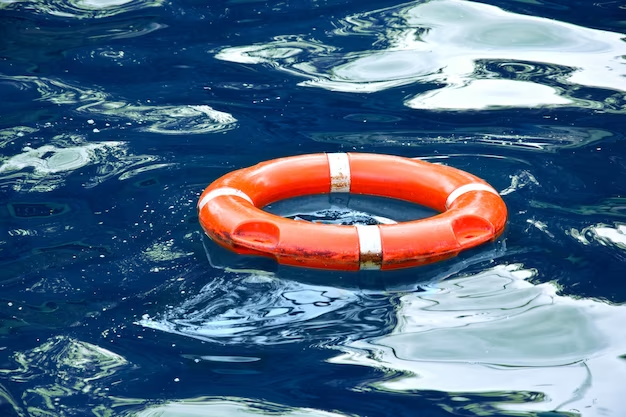A Comprehensive Guide to Pool Safety Inspections and Regulations in Victoria
A home pool is often a source of joy, relaxation, and family fun during the hot summer months. However, it can also pose certain risks, particularly if pool safety inspections measures are not taken seriously. In the state of Victoria, Australia, stringent regulations and standards have been established to ensure the safety of residential pools.
I. Pool Safety
Inspections
1.1 The Need for Pool
Safety Inspections
The primary goal of
pool safety inspections is to identify potential hazards and ensure that
residential pools comply with safety standards. These inspections play a
crucial role in preventing accidents and drowning incidents, especially
involving young children.
1.2 When are Pool
Safety Inspections Required?
In Victoria, pool
safety inspections are required under the following circumstances:
a. New Pool
Construction: Before the use of a newly constructed pool, an inspection is
mandatory to confirm compliance with safety regulations.
b. Sale or Lease of a
Property: When a property with an existing pool is sold or leased, a pool
safety inspection is required to provide potential buyers or tenants with
assurance that the pool is safe.
c. Inadequate Pool
Fencing: If a pool owner receives an infringement notice due to inadequate pool
safety inspection will be necessary to rectify the issues.
d. Requested by
Authorities: In some cases, local authorities may request a safety inspection
if they have reason to believe that a pool poses a safety risk.
1.3 The Inspection
Process
During a pool safety
inspection, a licensed inspector evaluates various aspects of the pool area to
ensure compliance with safety regulations. Key elements that are assessed
include:
- Pool fencing height,
construction, and maintenance.
- Gate latching
mechanisms to prevent unsupervised access.
- Clearance between the
fence and the ground.
- Presence of climbable
objects near the fence.
- Pool water quality
and clarity.
- Adequate signage
indicating pool rules and safety precautions.
- The functionality of
safety features such as resuscitation charts and lifebuoys.
II. Pool Fencing
Regulations in Victoria
2.1 Key Requirements
for Pool Fencing
Pool
fencing regulations Vic are designed to prevent accidents and unauthorized
access to pools. Some essential requirements include:
- Pool fencing must be
at least 1.2 meters high.
- Vertical gaps between
fence components should not exceed 100mm.
- Horizontal climbable
rails must not be within 900mm of each other.
- Gates must be
self-closing and self-latching.
- Latches must be
positioned at least 1500mm above the ground.
- Fencing materials
should be durable and maintained in good condition.
- The fence must have a
non-climbable zone, typically extending 300mm inside and outside of the pool
barrier.
2.2 Types of Acceptable
Pool Fencing
Pool owners in Victoria
have several options when it comes to pool fencing materials. Common choices
include:
- Glass Fencing:
Frameless or semi-frameless glass panels provide an unobstructed view of the
pool area and a sleek, modern appearance.
- Metal Fencing: Steel
or aluminum fencing is a durable and cost-effective option that can be
customized to match the aesthetic of the property.
- Timber Fencing:
Wooden pool fences offer a classic and warm appearance, though they require
regular maintenance to prevent decay.
- Mesh Fencing: Mesh
pool fencing is a versatile and affordable choice that can be easily removed
when not needed.
2.3 Exemptions and
Special Cases
While pool safety
regulations are generally strict, there are some exemptions and special cases.
For instance:
- Spas and hot tubs
with locking covers may not require a pool fence, but they should remain
securely covered when not in use.
- Above-ground pools
with walls of at least 1.2 meters may not need additional fencing.
- Fencing requirements
may be adjusted for properties with unique layout challenges or historical
significance, provided that safety measures are still met.
III. Pool Safety
Certificate
3.1 What is a Pool
Safety Certificate?
A pool safety
certificate is a formal document issued by a licensed pool safety
inspector, indicating that the pool area complies with all relevant safety
regulations. There are two types of pool safety certificates:
- Pool Safety
Certificate (Form 23): This certificate is issued when a pool area is found to
be compliant with safety standards. It is valid for a period of four years for
a shared pool and one year for a non-shared pool.
- Pool Safety
Non-conformity Certificate (Form 26): This certificate is issued when a pool
area does not meet safety standards. It outlines the necessary repairs and
modifications to achieve compliance.
3.2 Obtaining a Pool
Safety Certificate
To obtain a pool safety
certificate, pool owners must follow these steps:
a. Schedule an
Inspection: Contact a licensed pool safety inspector to schedule a pool safety
inspection at your property.
b. Inspection: The
inspector will assess the pool area and fencing for compliance with safety
regulations.
c. Certificate
Issuance: If the pool area meets all safety requirements, the inspector will
issue a Pool Safety Certificate (Form 23). If not, they will provide a Pool
Safety Non-conformity Certificate (Form 26) with a list of required
improvements.
d. Compliance Deadline:
Pool owners have 90 days from the date of the inspection to address
non-conformities and obtain a Pool Safety Certificate.
3.3 Importance of a
Pool Safety Certificate
A valid Pool Safety
Certificate is essential for various reasons:
Legal Requirement: In
Victoria, it is illegal to sell or lease a property with a pool without a valid
Pool Safety Certificate.
Peace of Mind: Having a
compliant pool area ensures the safety of family members and guests, providing
peace of mind.
Avoid Penalties:
Non-compliance with pool safety regulations can result in fines and legal
consequences. A Pool Safety Certificate helps avoid such penalties.
IV. Pool Safety
Compliances
4.1 Maintaining
Compliance
Once a Pool
Safety compliances with safety regulations. Regular maintenance and
vigilance are necessary to ensure that the pool area remains safe for use. Some
key steps to maintain compliance include:
- Regularly inspecting
and maintaining pool fencing and gates.
- Ensuring that
climbable objects are kept away from the pool barrier.
- Supervising children
around the pool at all times.
- Keeping the pool
water clean and well-maintained to prevent accidents.
- Updating safety
signage and resuscitation charts as needed.
4.2 Penalties for
Non-compliance
Failure to comply with
pool safety regulations in Victoria can lead to serious consequences, including
fines and legal actions. Penalties may vary depending on the severity of the
non-compliance and can range from infringement notices to legal action in
court.
4.3 Staying Informed
To stay informed about
the latest pool safety regulations and requirements in Victoria, pool owners
can refer to resources provided by local authorities, such as the Victorian
Building Authority (VBA) and the Royal Life Saving Society Australia. It is
also advisable to consult with licensed pool safety inspectors and fencing
professionals for expert guidance and compliance assistance.
Ensuring pool safety in
Victoria is not just a legal obligation; it is a moral responsibility to
protect the lives of loved ones and prevent accidents. Pool safety inspections,
adherence to pool fencing regulations, obtaining a Pool Safety Certificate, and
maintaining compliance are all vital steps in achieving a safe and enjoyable
pool




Comments
Post a Comment